Spain’s national football team has a storied history of tactical innovation and success. Under the new stewardship of Luis de la Fuente, La Roja continues this tradition with fresh ideas and strategies. In this article, we delve into the tactical blueprint de la Fuente employs, examining how his approach builds on Spain’s legacy while introducing new elements to keep the team competitive on the global stage. From formations and key player roles to in-game adjustments, we uncover the tactical intricacies that define de la Fuente’s Spain, offering insights into how they strive to dominate possession, create scoring opportunities, and maintain defensive solidity.
Build-up
De la Fuente sets his team up in a 1-4-3-3 formation in the build-up, with a back four, one number-six, two number-eights, and a front three.
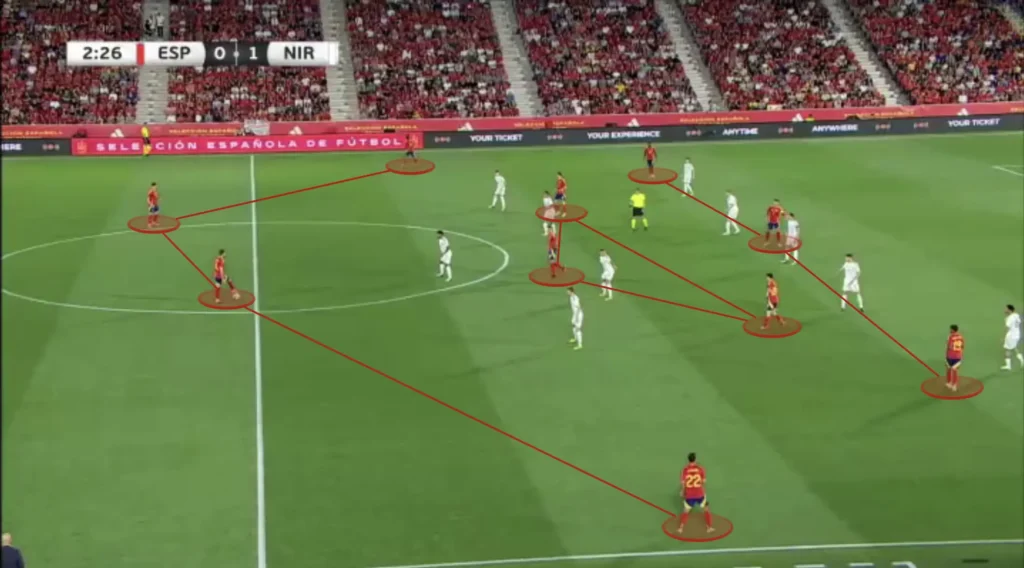
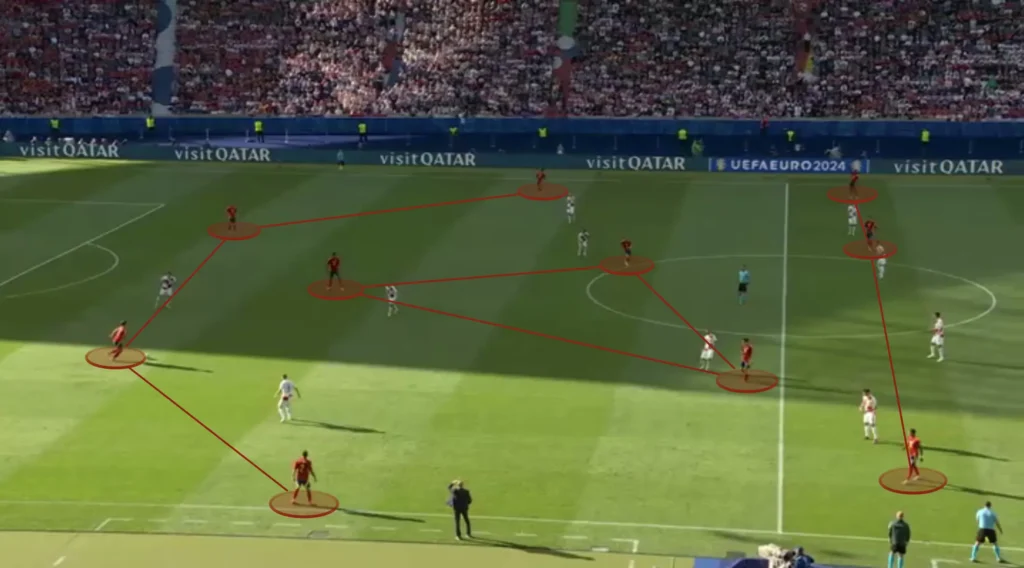
The fullbacks are usually very wide, which forces the opposition wingers to be wide. This pulls apart the opposition’s midfield, opening up the passing lanes from the center-backs to the midfield.
The wingers often come in during Spain’s high build-up, allowing the fullbacks to push up more, creating a 1-2-3-5 formation.
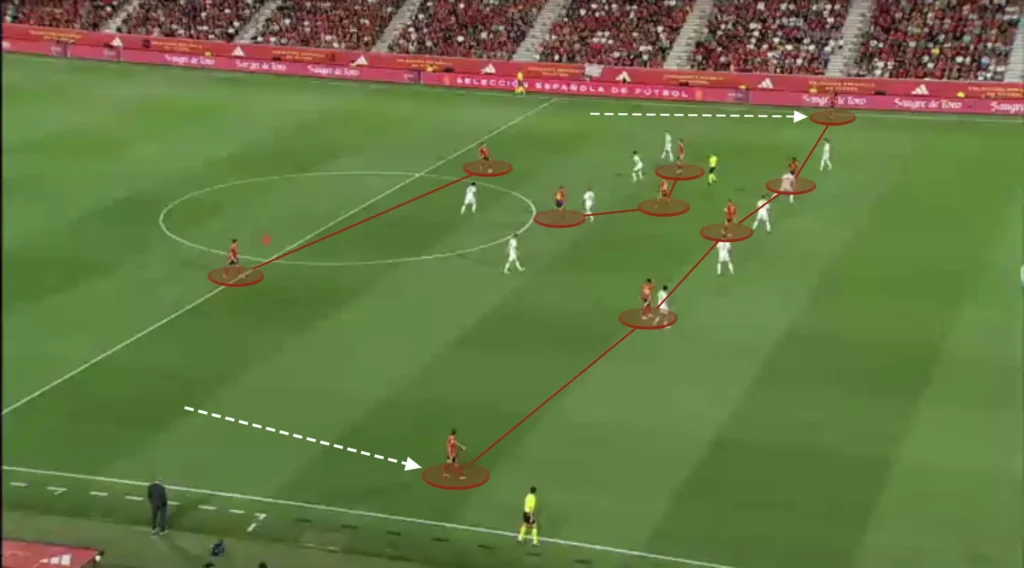
This gives them eight players in the central areas and one on each wing, which creates more options in the center and less space between the players. De la Fuente likes this because he prioritizes playing through the middle. He needs one player high and wide to pull apart the backline while the rest create numerical advantages in the midfield areas. This builds good conditions in defensive transitions, allowing more players to press when they lose the ball. Another purpose for keeping many players in the middle is to shorten the distance between them. This shortens the length of the passes, which naturally shortens the time between passes. This means the opposition players will have less time to push up and press, giving the Spanish players more time and control.
Keeping Possession
Luis de la Fuente’s Spain places a strong emphasis on maintaining possession, a hallmark of Spanish football. The team meticulously builds from the back, using short, precise passes to advance up the field and retain control. Midfielders play a pivotal role, constantly moving to create passing lanes and support their teammates, ensuring that Spain dominates the ball. This possession-oriented approach not only helps in controlling the tempo of the game but also minimizes the opposition’s chances by limiting their time with the ball. De la Fuente’s emphasis on technical proficiency and spatial awareness ensures that Spain can patiently dismantle defensive setups while waiting for the right moment to strike.
High Backline (Off)
A massive aspect of De la Fuente’s high possession build-up is they keep a high backline. This helps in the counterpress because they get closer to the center. Having more players close to the center who can win the ball back makes it difficult for the opposition to do anything when they win possession. Furthermore, the high backline shortens the distance between players, shortening the time and length of the passes and preventing the opposition from pushing up their defense.
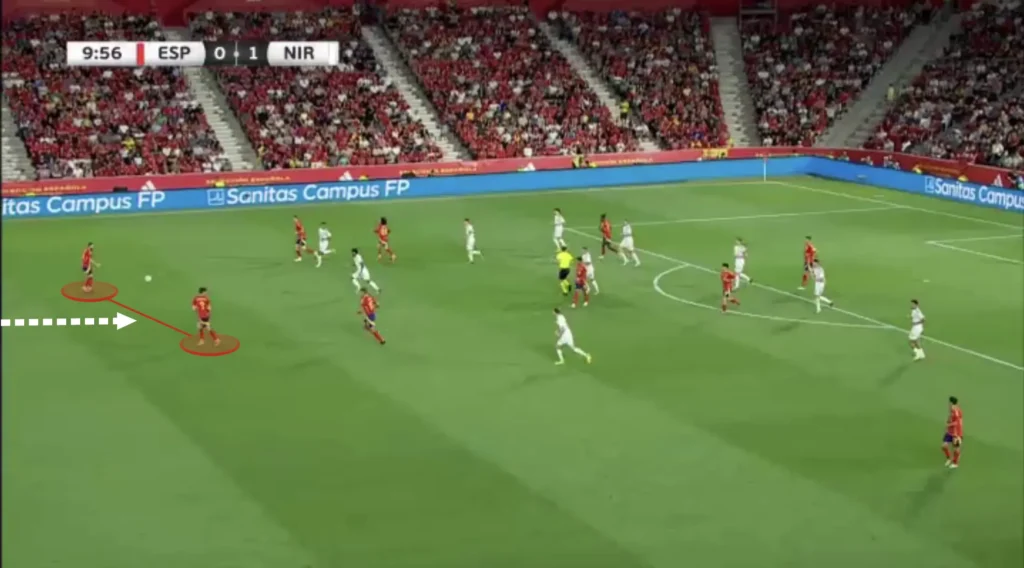
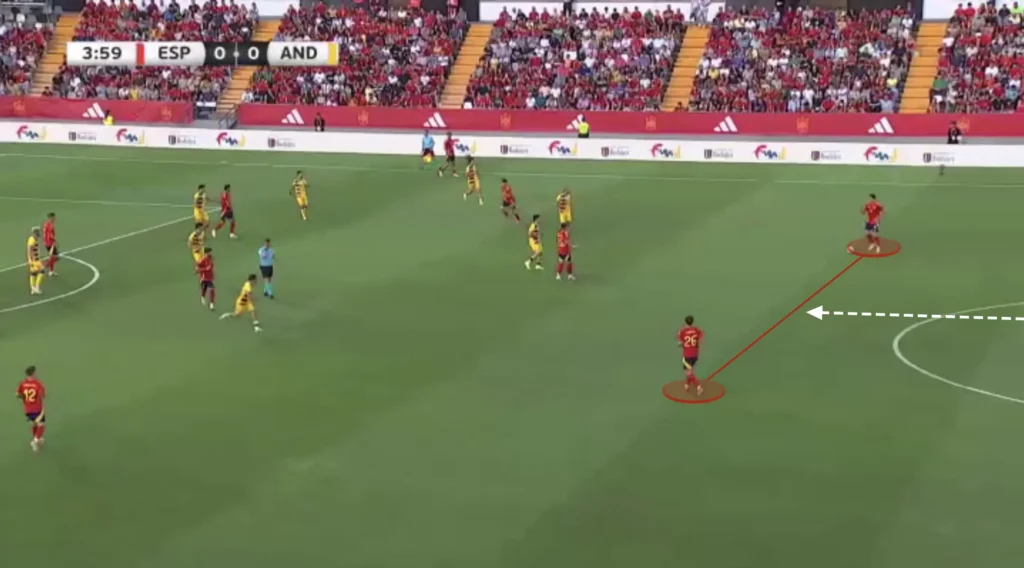
Linking with the Striker
De la Fuente likes to create central overloads when attacking the opposition. Therefore, the Spain striker, Morata, often drops during the build-up. When the striker drops, they unlock more ways of beating the opponent’s defense. They can pass the ball to the striker, who can find a number-eight in the pocket or play a one-touch pass out to the winger.
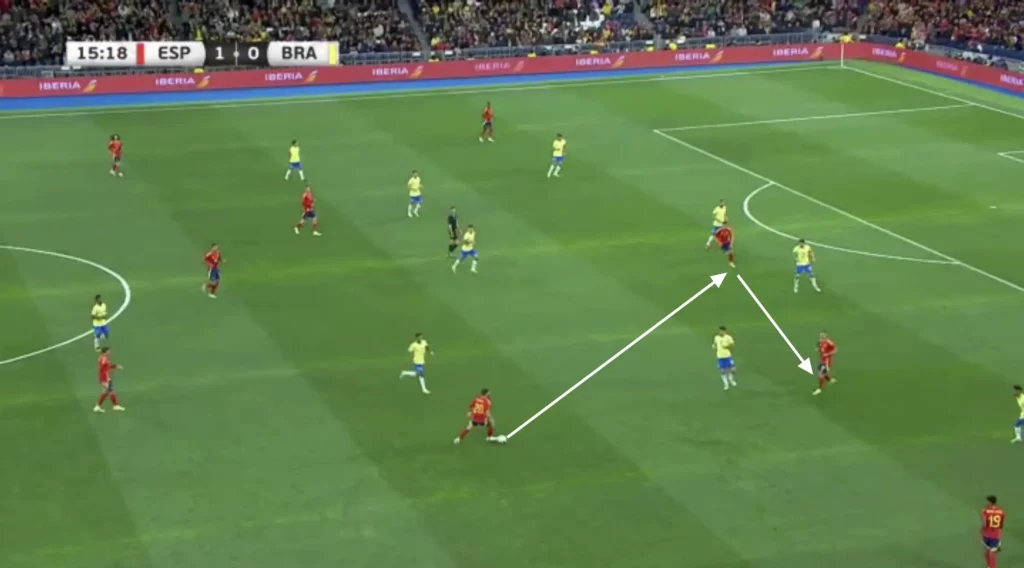
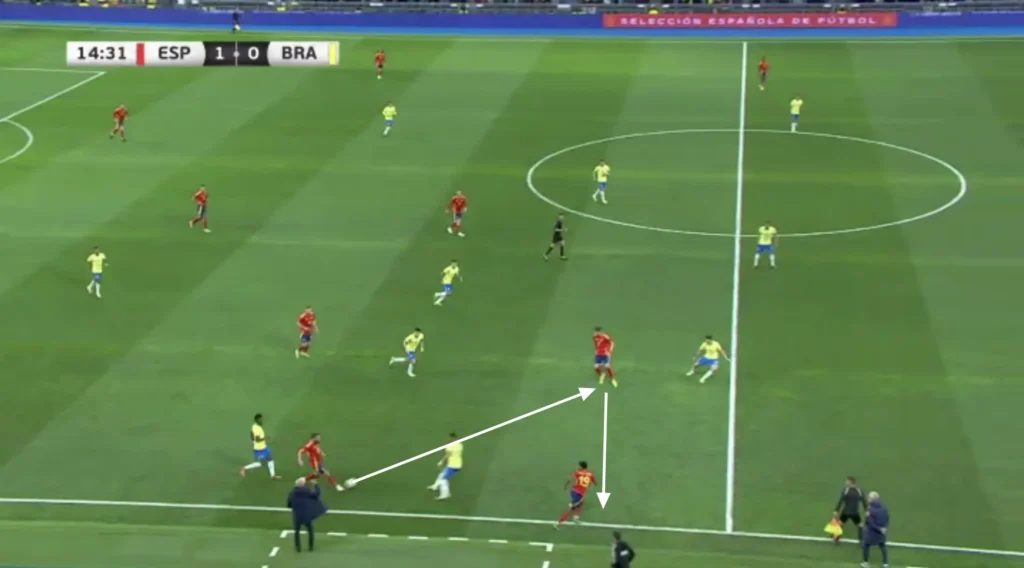
If the center-back pushes up on the striker, the space in behind opens up. When that happens, Spain will exploit the space in behind with runs from the wingers or number-eights.
Finding the Pockets
De la Fuente’s team always tries to find the number-eights in the pockets. The number-eights will be positioned behind the opposition’s midfield, and with the fullbacks wide, the passing lanes from the center-backs to the number-eights will be opened. Spain’s front three will be pinning the opposition backline, not allowing them to push up on the number-eights. They will look for passes from the backline, breaking lines and finding a number-eight who will turn and drive at the defense.
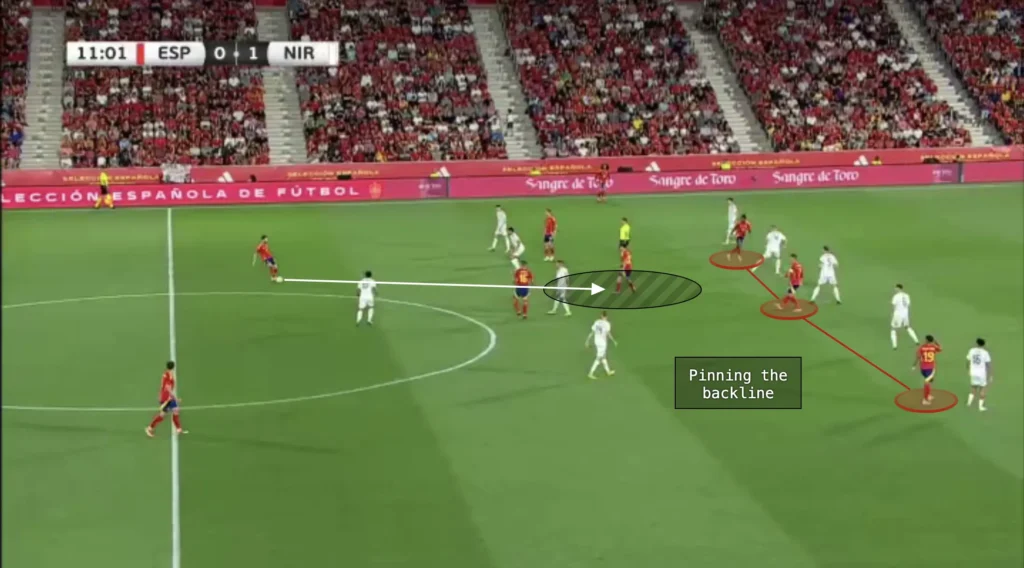
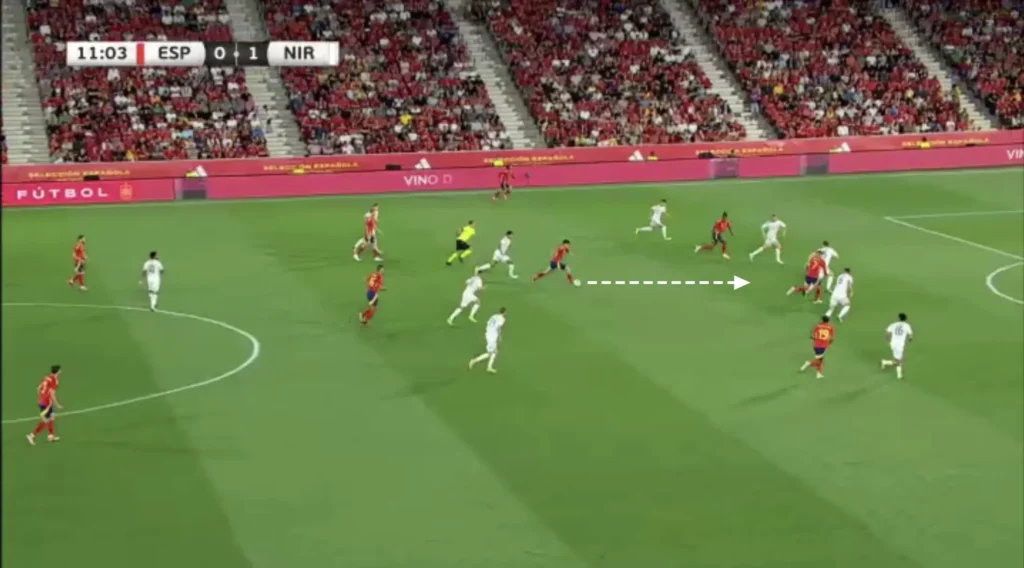
Runs in Behind
A new dimension that Luis de la Fuente has added to Spain’s build-up is their threat in behind. With rapid wingers like Lamine Yamal, Nico Williams, and Ferran Torres, Spain have started to be way more direct than they traditionally have been. Their wingers constantly make runs in behind when the defenders or midfielders have the ball, leading to many goalscoring opportunities from dangerous through-balls.
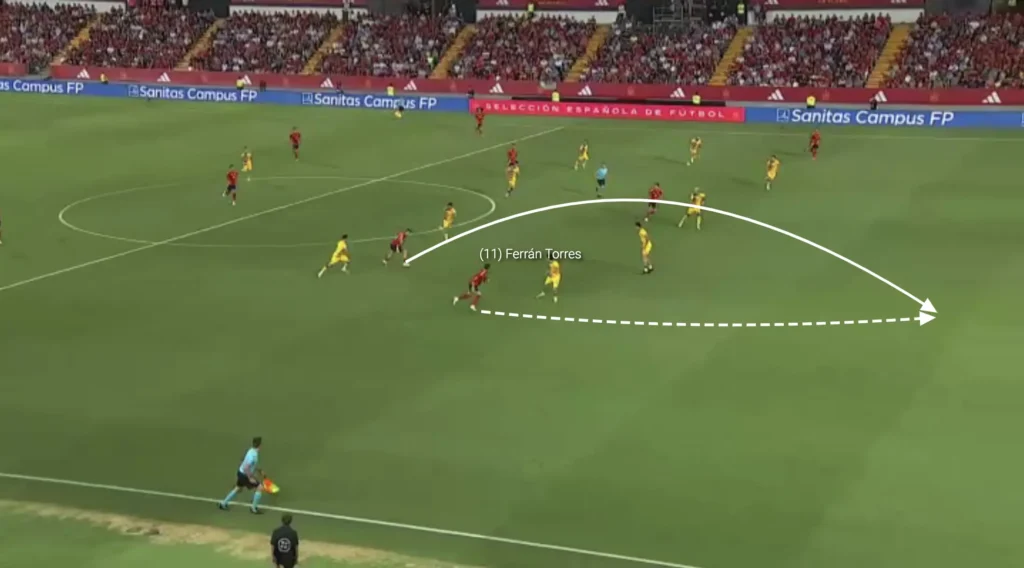
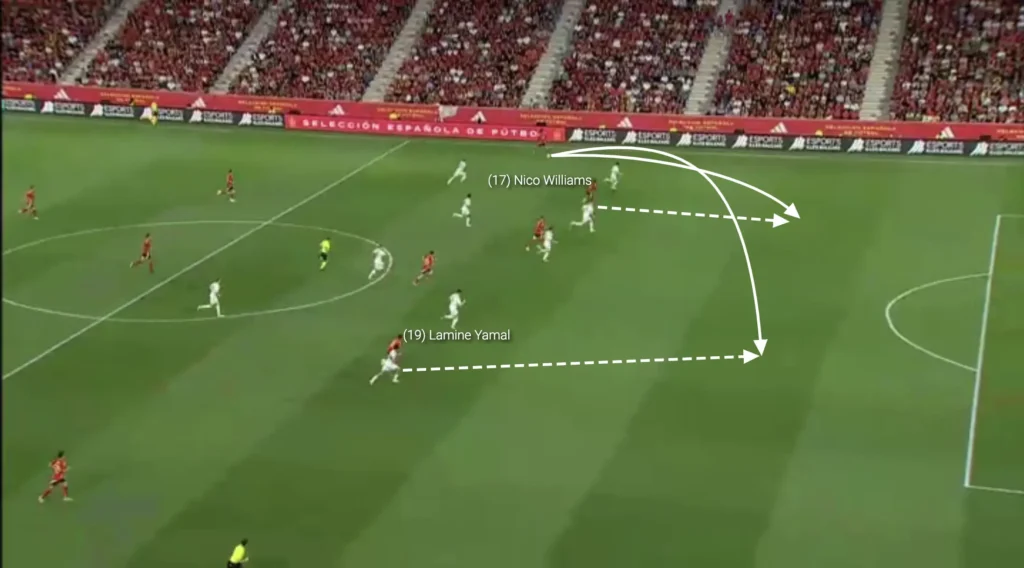
This constant threat also prevents the opposition from playing with a high backline and closing the space between the lines. Instead, they have to drop the backline and protect the space in behind. This opens the space in front of the backline for the technical Spanish midfielders to exploit.
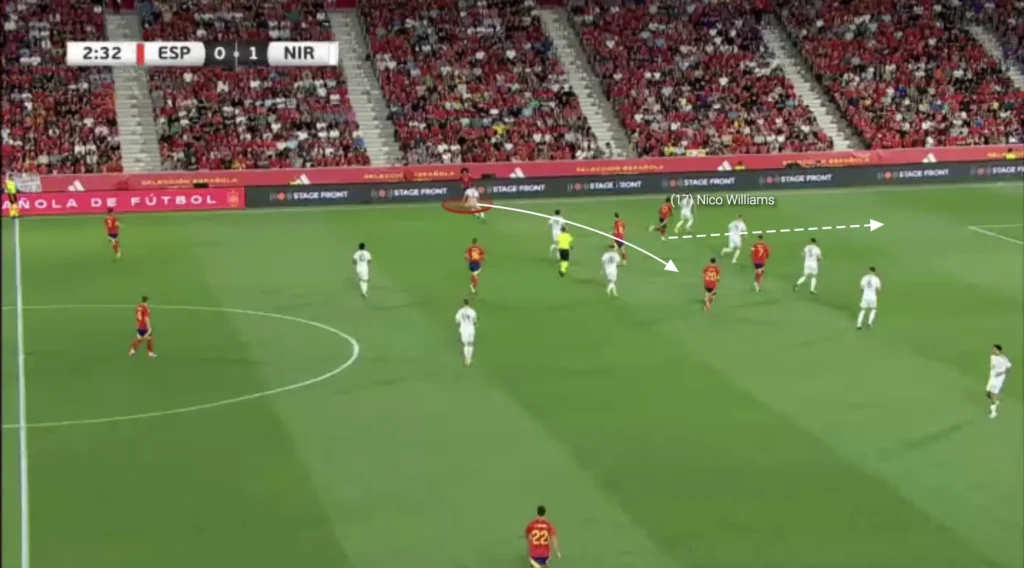
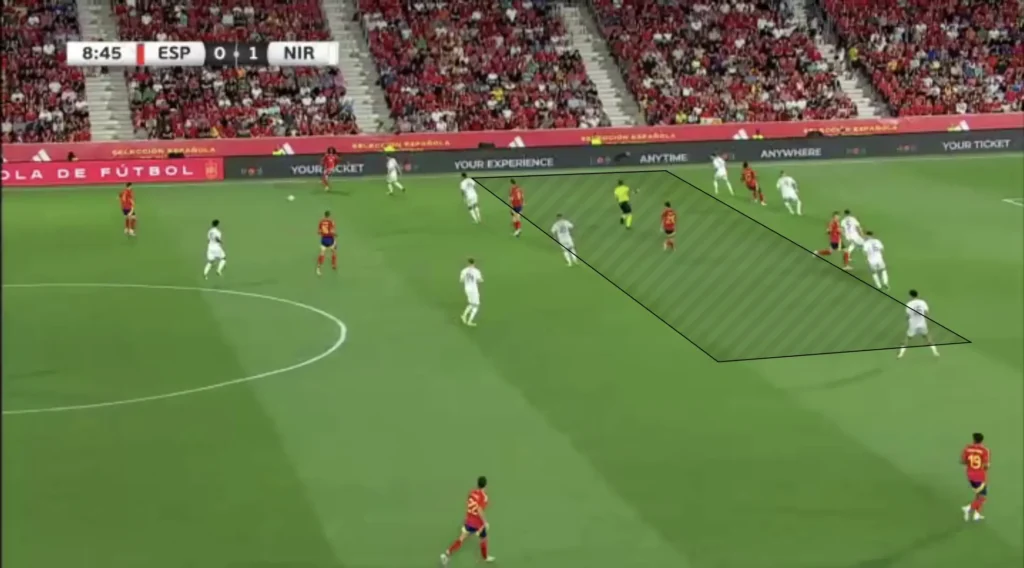
Numerical Advantages
Another massive aspect of Spain’s high build-up is their ability to create numerical advantages against the opposition’s defensive line. When the fullbacks push up to create a 1-2-3-5 formation, their front five naturally becomes numerically superior against the opposition’s backline, which they are great at taking advantage of.
For example, when the defending team is positioned on one side, the weak-side fullback becomes vulnerable to the long switch of play due to the 1v2 against Spain’s winger and fullback. The winger will make a run in behind, the opposition fullback will follow that run, and the space for the Spanish fullback out wide will be opened. De la Fuente’s team often capitalizes on this by getting the ball to the winger and creating many opportunities from 2v1 situations on the wing and in the half-spaces.
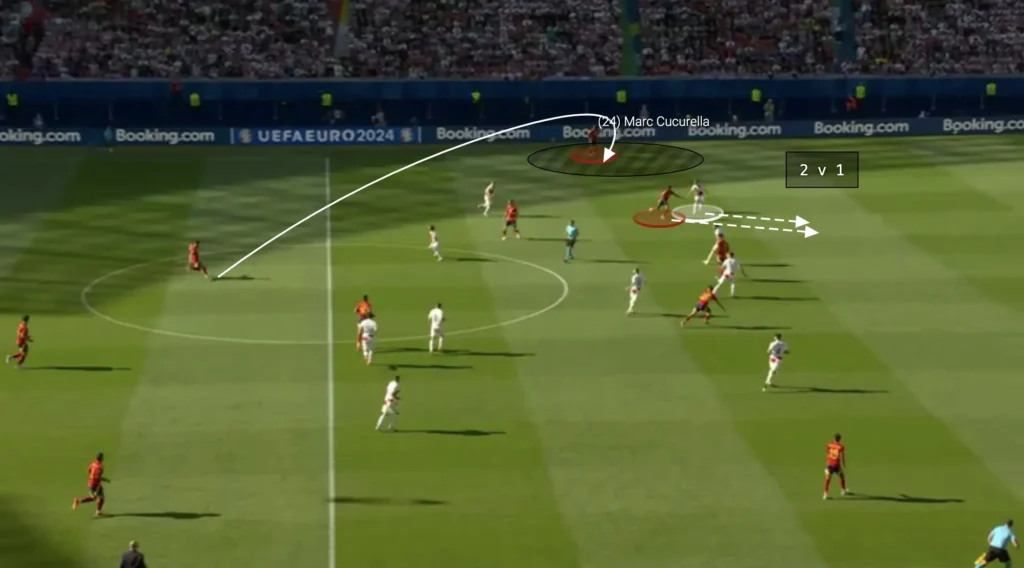
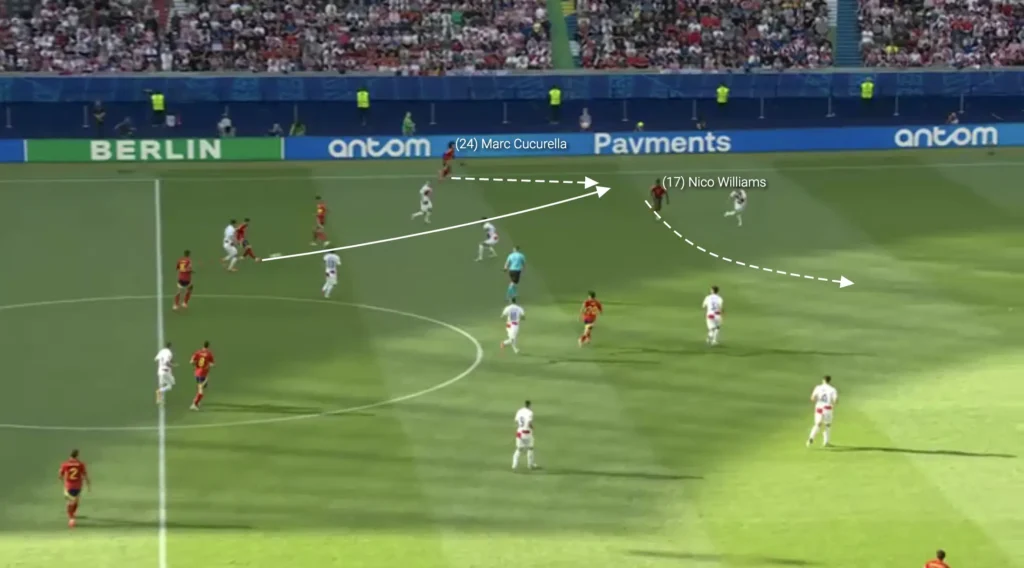
Final Third
Attacking the Half-Space
De la Fuente’s teams usually look to create chances by attacking the space between the opposition center-back and fullback. They primarily do this from the wide areas with underlaps from the number-eights. When the winger receives the ball he will attract the opposition fullback. This opens the space between the fullback and the center-back, which allows the number-eight to make the underlapping run into this space. The ball can be played to the number-eight, who can cross the ball into the box or attack his defender in a 1v1 situation.
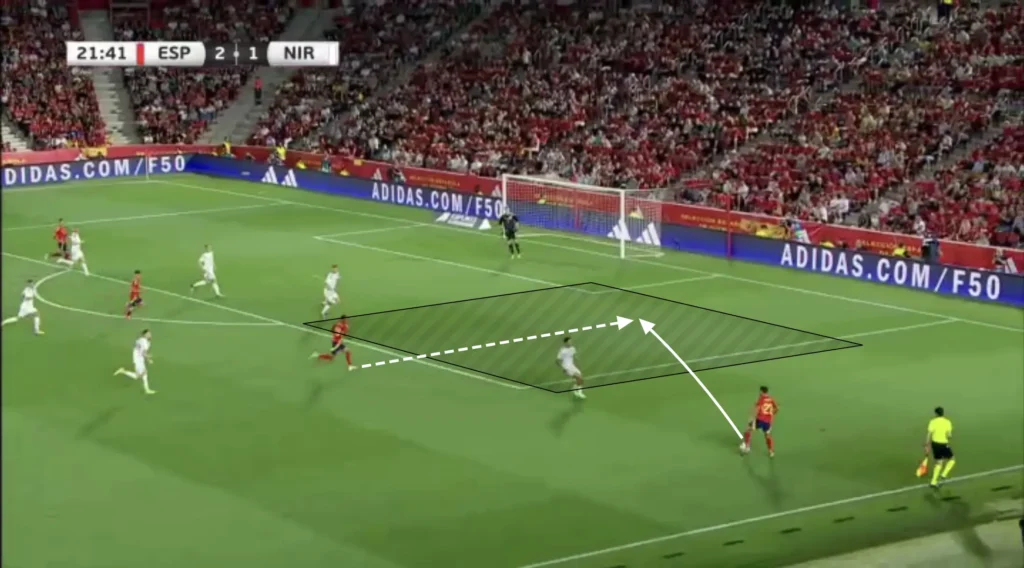
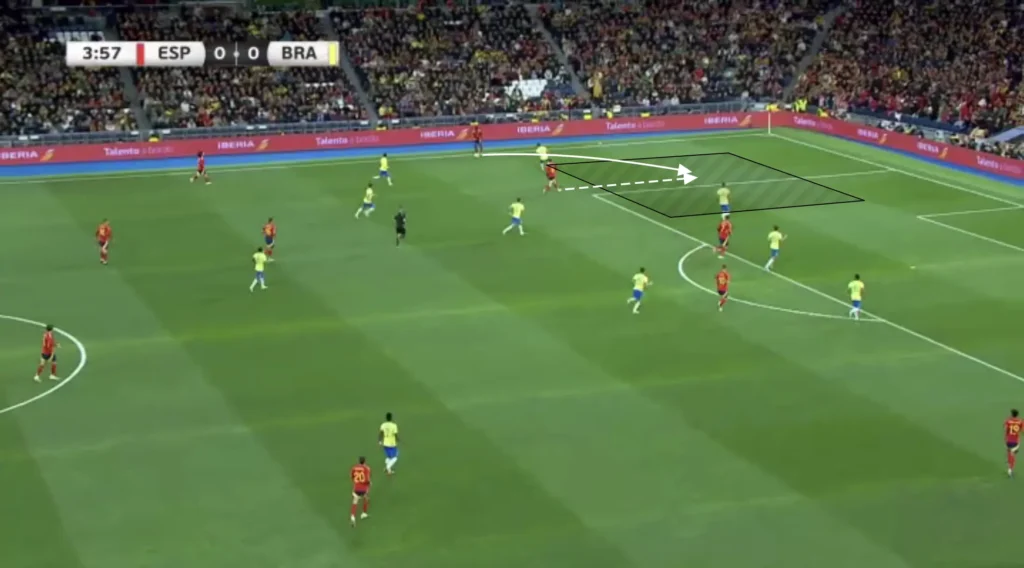
The winger does not have to play the ball to the underlapping player. The underlapping player will often drag away a defensive midfielder, which opens the space inside. The winger can take the ball inside and shoot or find a pass to a free player in front of the backline.
De la Fuente’s team also exploits the space between the center-back and the fullback by playing through-balls from the midfield or backline into a run from an attacker.
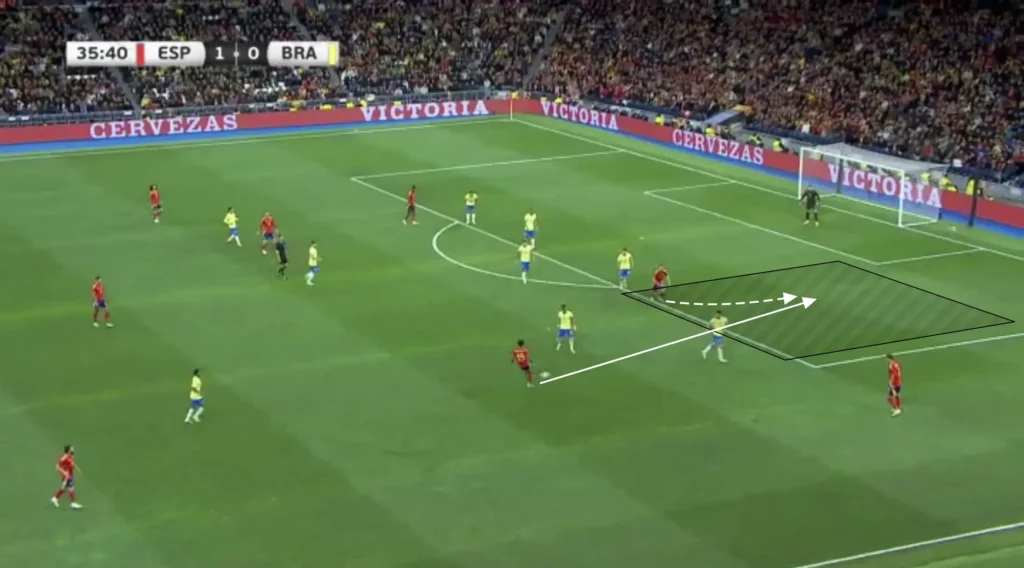
Overlaps
Spain have also used overlaps to produce opportunities in the final third. When the winger gets the ball, the Spain fullback will quickly make the overlap, creating a 2v1 on the wing. If the opposition fullback drops to cover the overlapping run, the winger could cut inside, taking a shot or combining with a midfielder. If the fullback covers the center, the ball can easily be played to the overlapping player, creating a crossing opportunity.
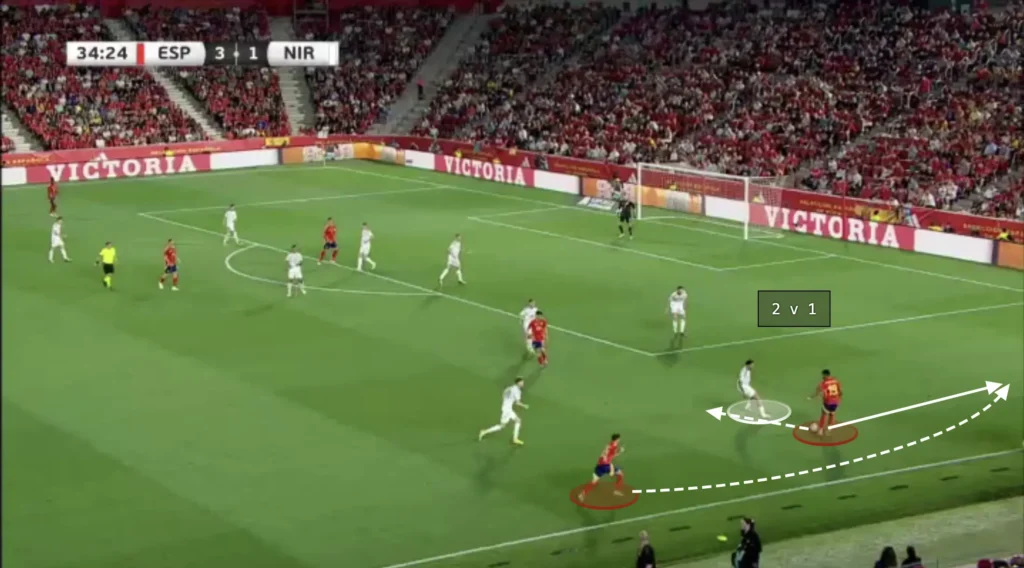
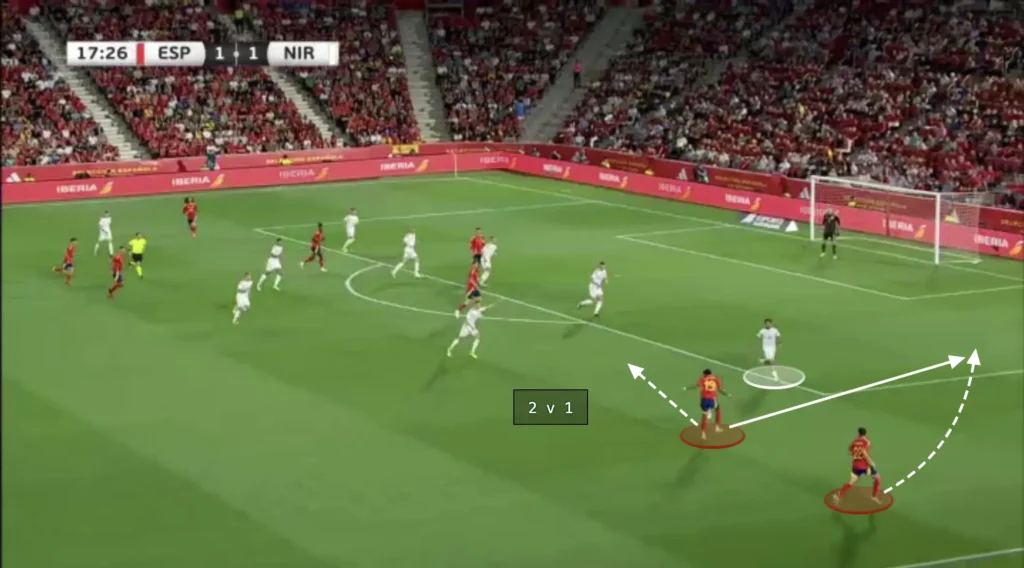
Many Players in the Box
The number-eights and wingers look to make runs into the box when the ball is in the final third, often getting four or five players into these areas to create overloads. The numerical advantages in the box force the defending team to make decisions and leave some players open.
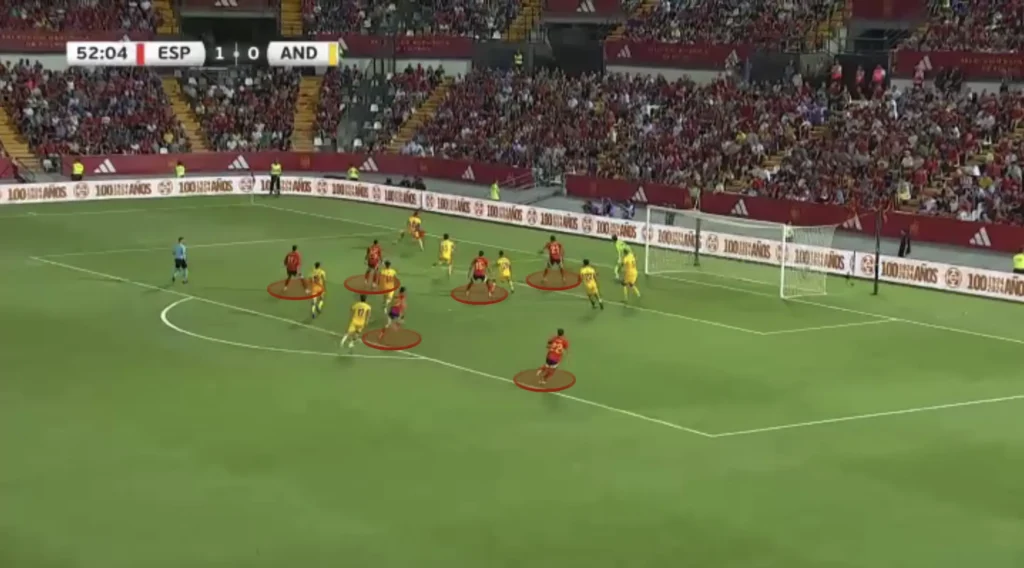
De la Fuente also positions many players outside the box, ready for the second balls and cut-backs. They always succeed in pushing down the opposition’s defense, which opens the space in front of the backline. The midfielders will often be found in these spaces with cut-backs, and from there, they can shoot or combine with an attacker to create goalscoring opportunities.
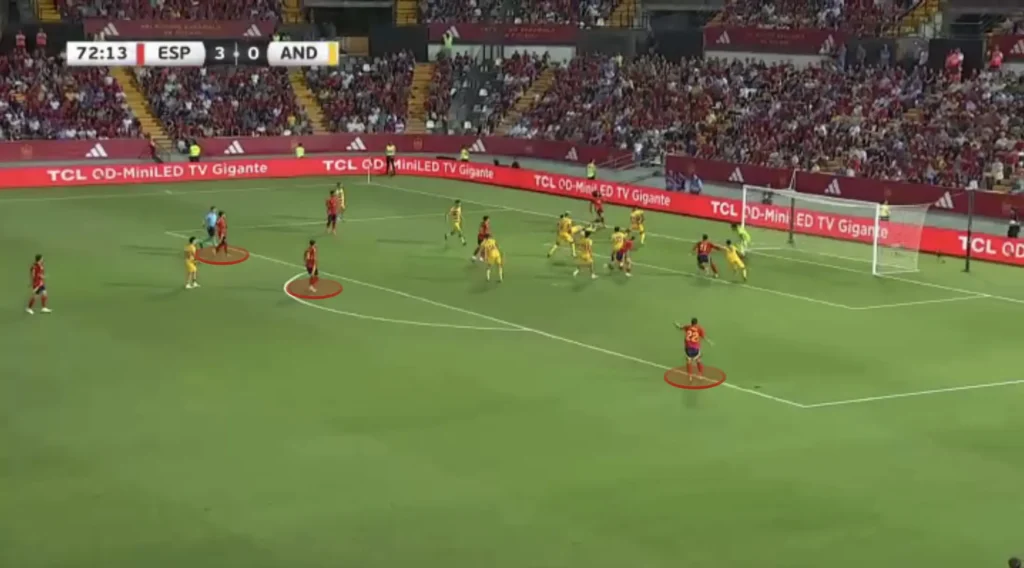
Defending
High Press
De la Fuente’s Spanish team presses the opposition high when possible and does so in a 1-4-1-3-2 formation:
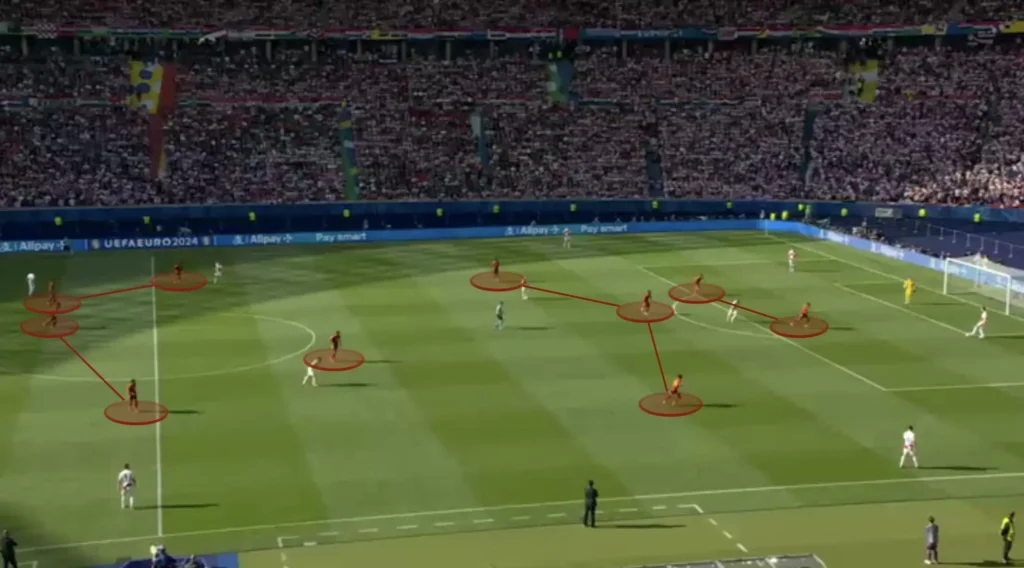
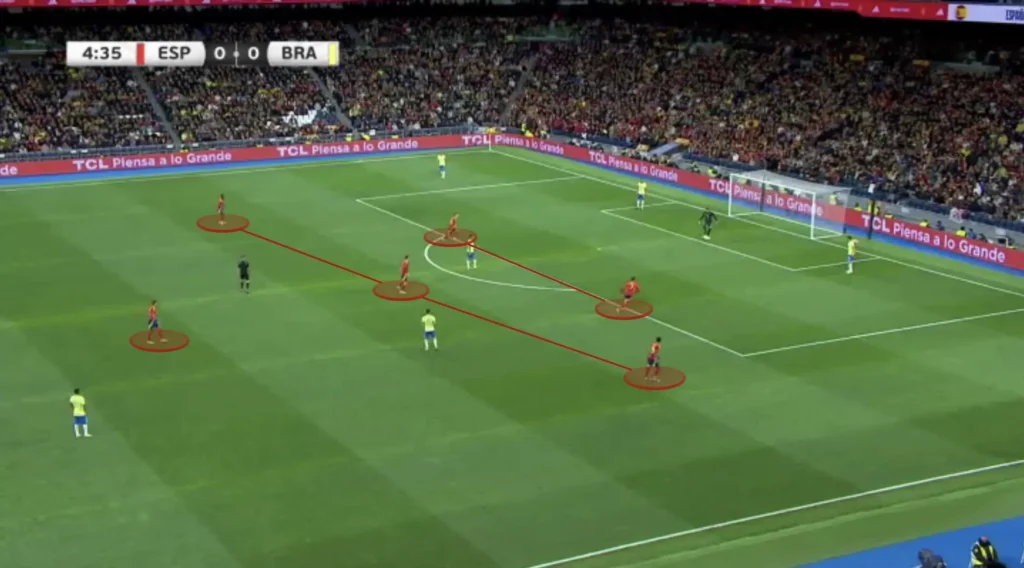
Many teams use a 1-4-3-3 formation in the build-up, which would give them a numerical advantage low down against Spain’s six midfielders and forwards. De la Fuente solves this by leaving the opposition’s weak-side fullback open and going man-to-man on the rest of the players when the ball gets played to one of the sides. The ball-side wide-midfielder pressures the opposition ball-side fullback, the holding midfielder pushes over on the opposition ball-side number-eight, and the weak-side wide-midfielder tucks in to control the opposition weak-side number-eight.
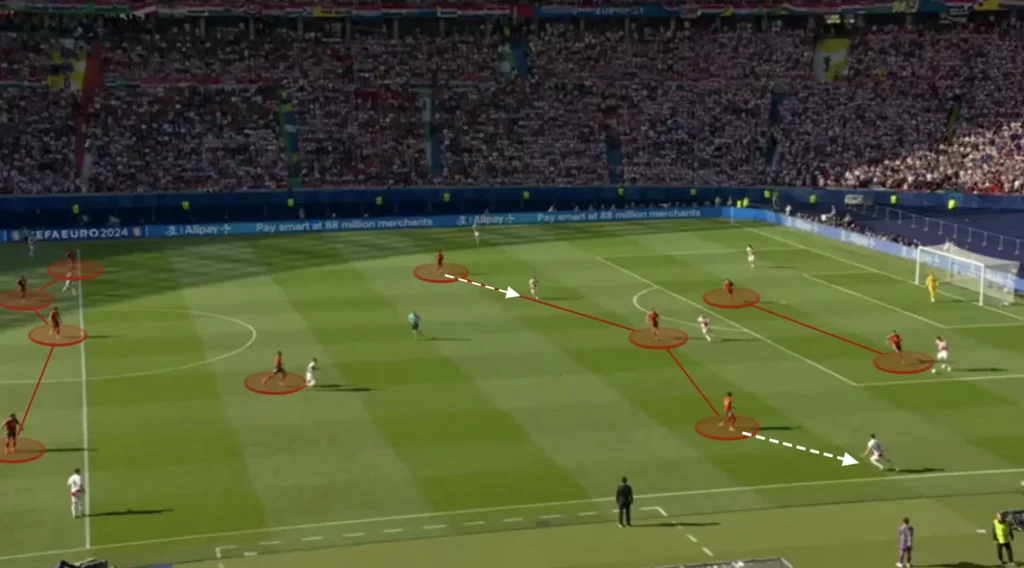
They can do this because the pass from one side to the other is too difficult for the ball-holder to make, and if he makes it, the Spain players have enough time to come across and win the ball. This system also gives Spain a numerical advantage against the opposition striker, giving them more control when defending long balls.
Low Press
De la Fuente’s Spain uses a 1-4-5-1 formation in the low press. They look to set up in a mid-block, always trying to close the center, forcing the opposition out wide. De la Fuente wants his midfielders to man-mark the opposition midfielders and the wingers to follow the opposition fullbacks. This makes their defensive shape very dynamic. Their midfield five adapts to the opponents, often creating asymmetrical shapes and formations.
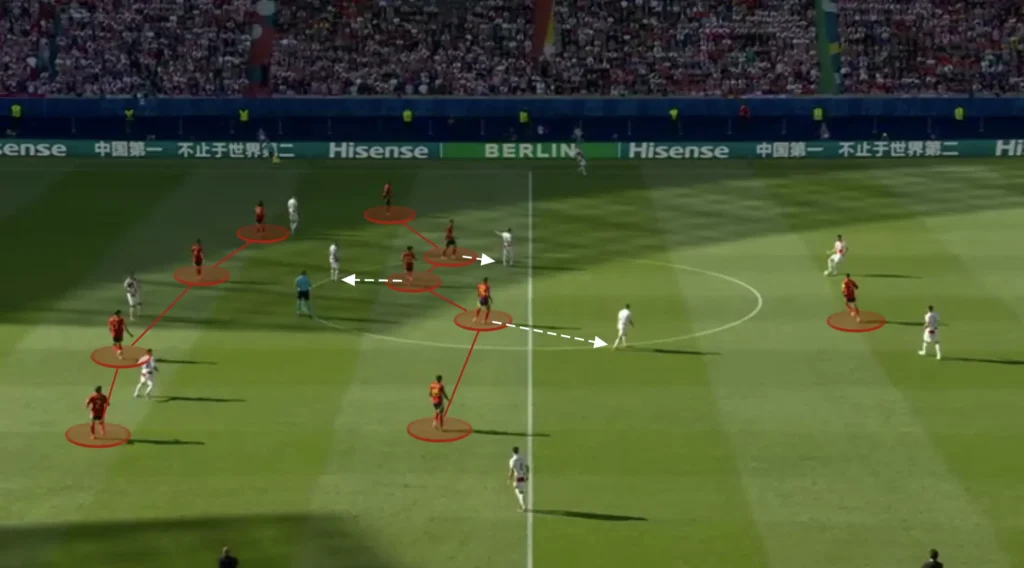
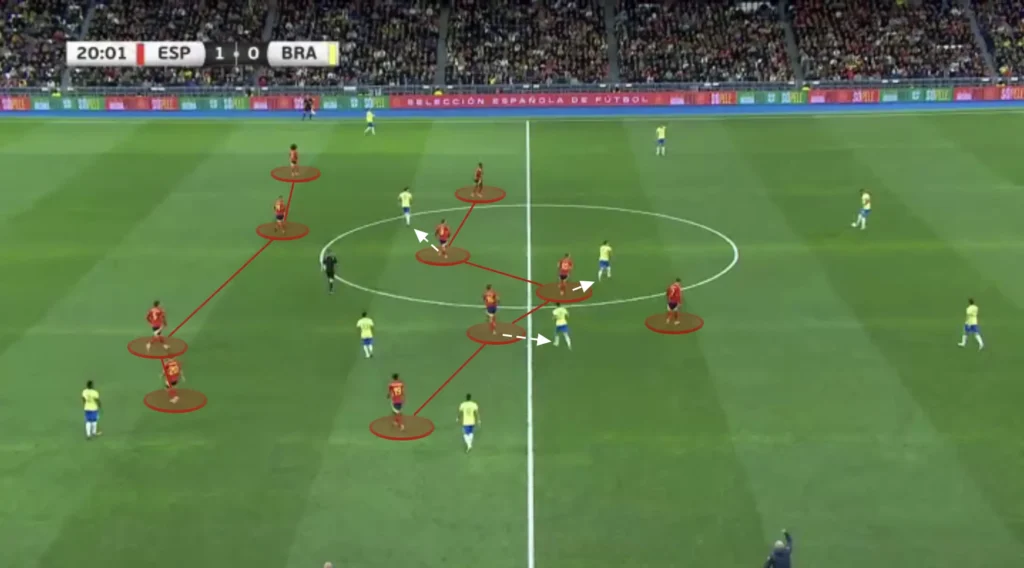
The man-to-man system makes it difficult for the opposition to find free players. However, it can confuse and cause issues for the Spanish players when facing fluid teams that often change positions.
The striker, Morata, is usually high up when defending. He is closing off one of the center-backs, making it difficult for the opposition to switch sides. When a central midfielder breaks out and decides to press one of the center-backs, the other one will be blocked off. This forces the center-back to either play the ball back to the goalkeeper or play it forward where Spain will come across and win the ball.
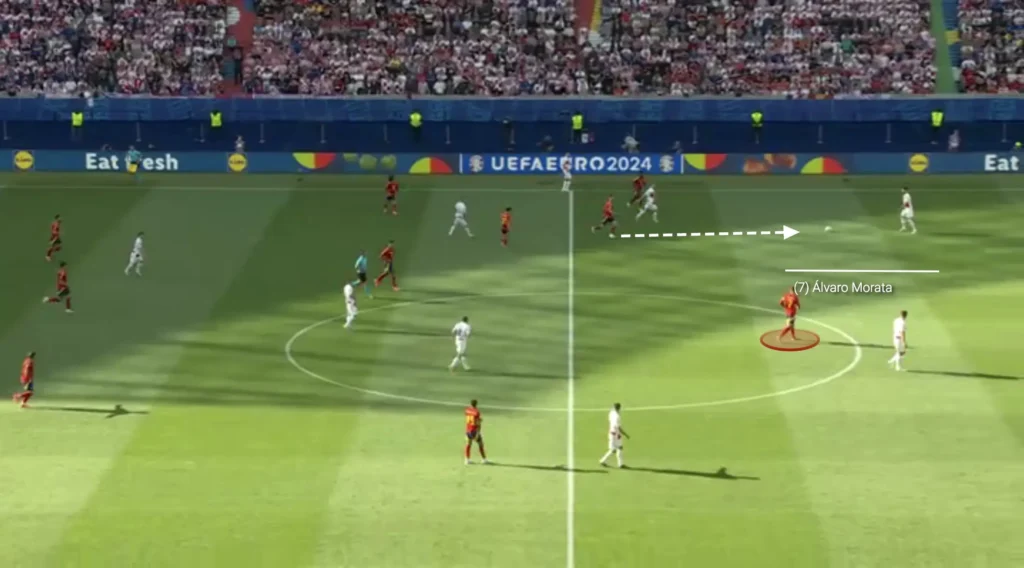
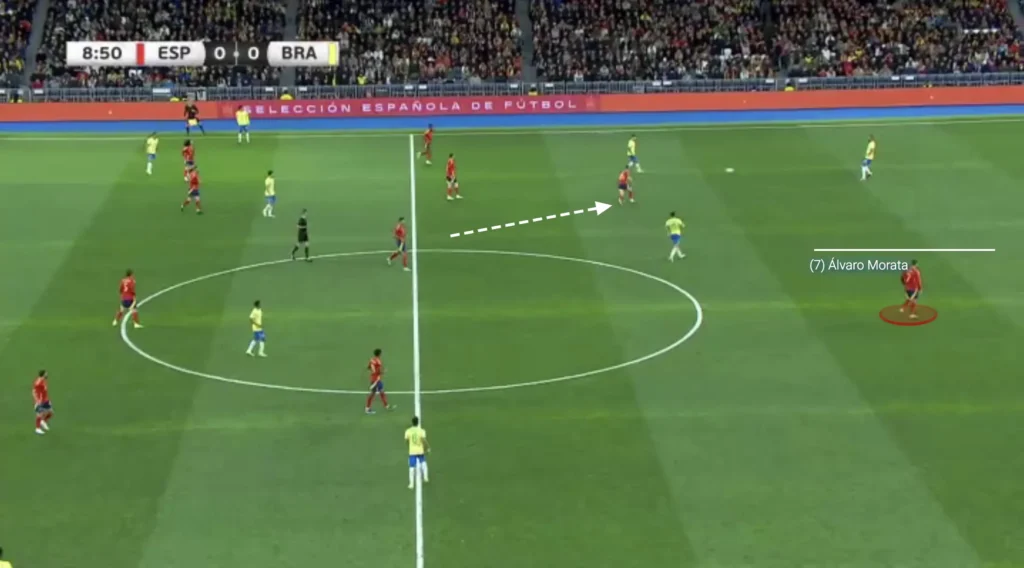
High Backline (Def)
One tool that helps to be compact is to play with a high backline, making the space to the midfield line as small as possible. Spain do this and usually try to keep the highest line they can without leaving the space behind them too open. Defending with a high backline involves positioning the defensive line closer to the midfield, rather than near the goalkeeper. This tactic compresses the space available for the opposing team to operate, disrupting their build-up play and increasing the chances of winning the ball back quickly.
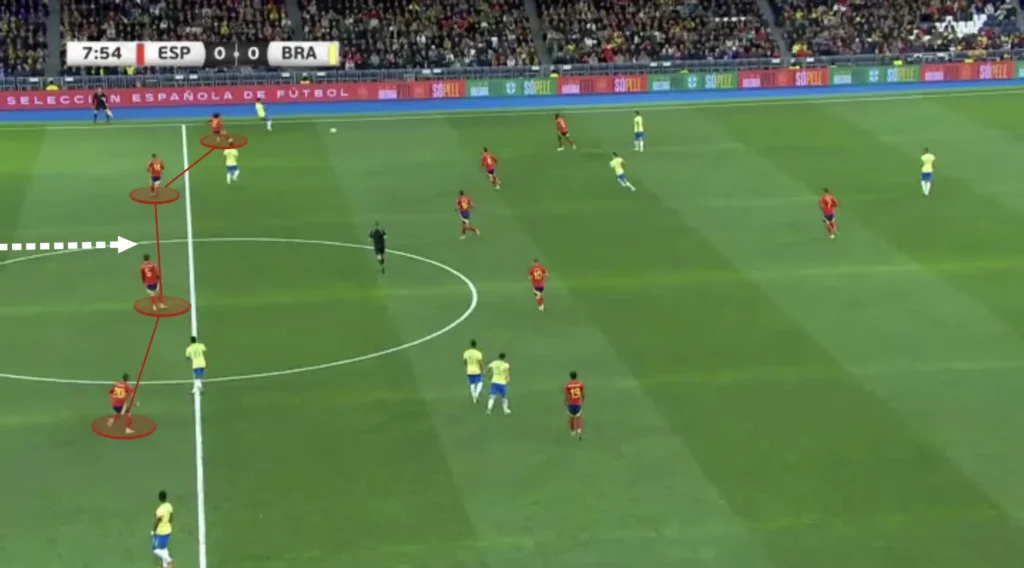
A high backline also allows defenders to support the midfield more effectively, creating numerical superiority in central areas and facilitating quicker transitions from defense to attack. However, it requires defenders with good pace and positional awareness to deal with long balls and prevent opposing attackers from exploiting the space behind. This approach demands constant communication and coordination among the backline to maintain a cohesive and effective defensive structure.
Everyone must be in the same line when defending with a high backline to maintain an effective offside trap, ensure cohesive coverage, and reduce gaps that attackers can exploit. A well-aligned defensive line makes it easier to catch opposing forwards offside, preventing them from receiving the ball in dangerous positions.
Squeezing the Pitch
De la Fuente always wants his team to squeeze the pitch when defending. This means constantly pushing the team up as much as possible. Every time the opponent plays a slow, sideways pass or a back pass, Spain’s first line of pressure pushes up, with the rest of the team following to stay compact. When the next pass comes, they push up even more, forcing the opponent back even more. They do this because it pushes the opponent further away from the Spain goal, making it harder to create chances.
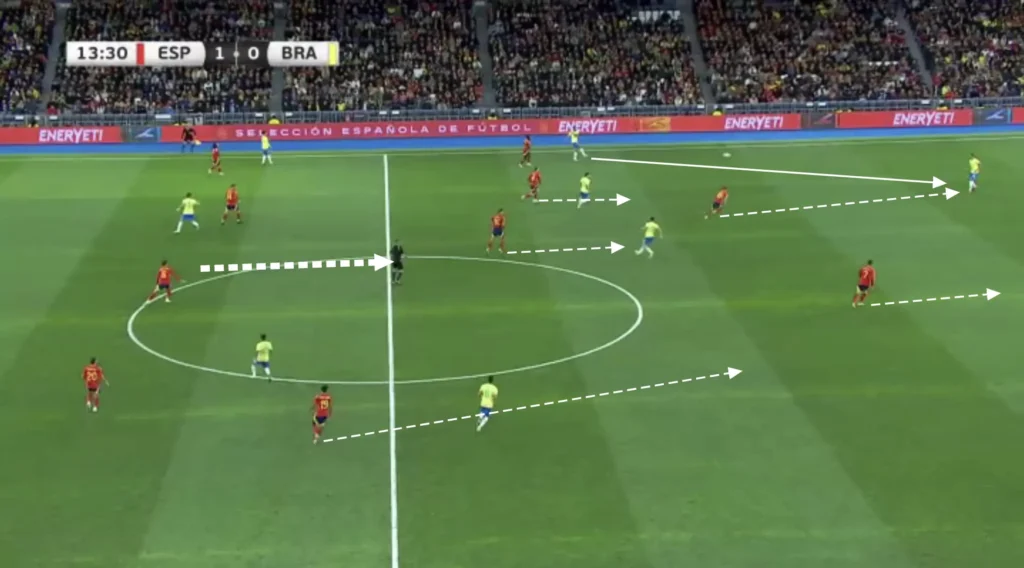
Transitions
Defensive Transitions
Positioning many players centrally, creating a numerical advantage in the midfield, creates good conditions in defensive transitions. Many players close to the ball after losing possession means that many players can work towards regaining possession. De la Fuente’s players are also very aggressive in the first seconds after losing the ball. The four or five players closest will immediately jump on the opposition player with the ball and close the distance to cut off any passing lanes. De la Fuente’s team, therefore, often regains possession directly after losing it.
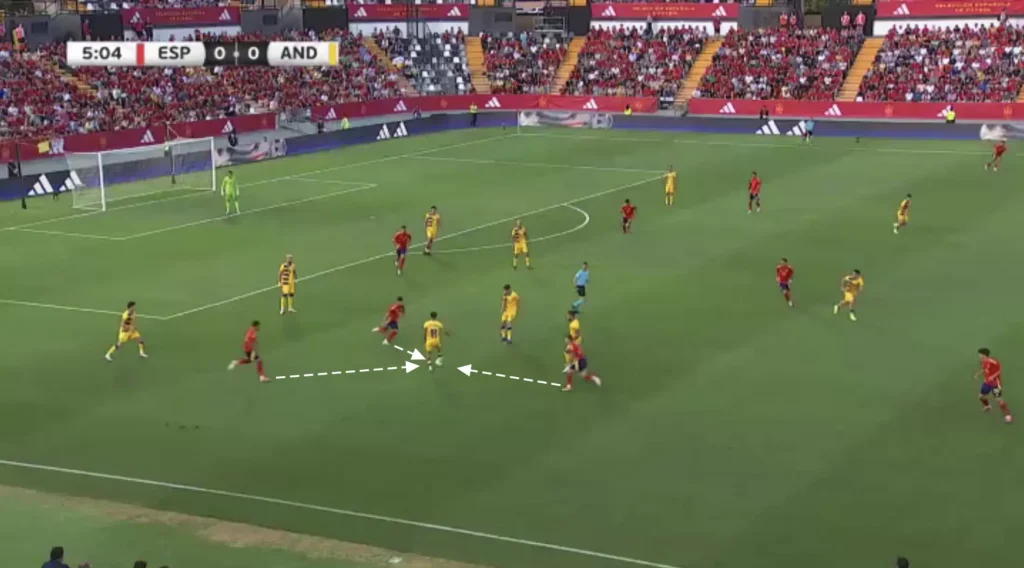
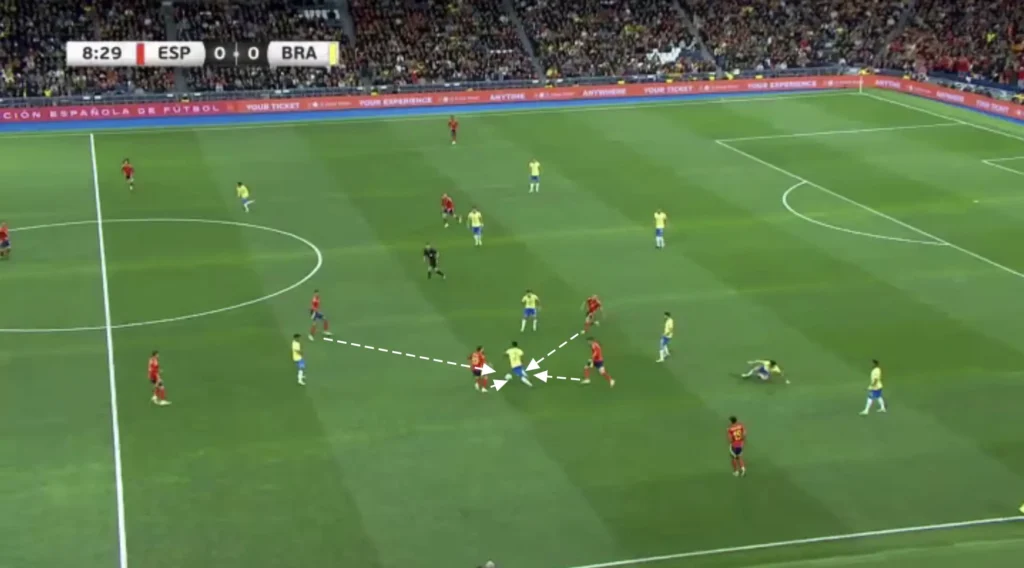
Offensive Transitions
Traditionally, Spanish teams have looked to restart and recycle possession when regaining the ball. De la Fuente, however, wants his team to counterattack in their offensive transitions. This is because of their quick wingers, Lamine Yamal and Nico Williams. They counterattack with a high tempo, often attacking the spaces between the center-backs and fullbacks. In addition, keeping many players centrally while defending enables them to incorporate more players into the counterattacks.
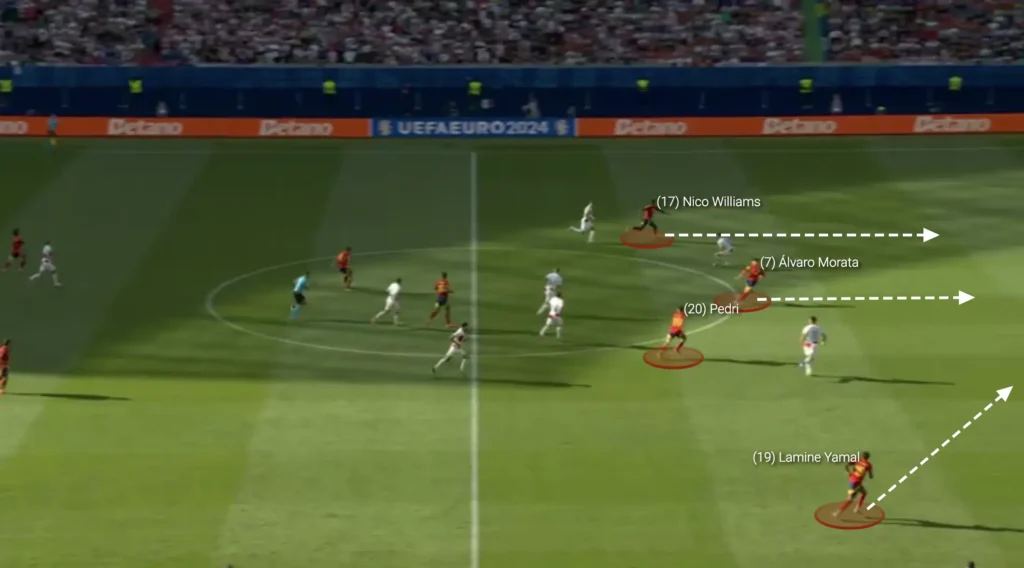
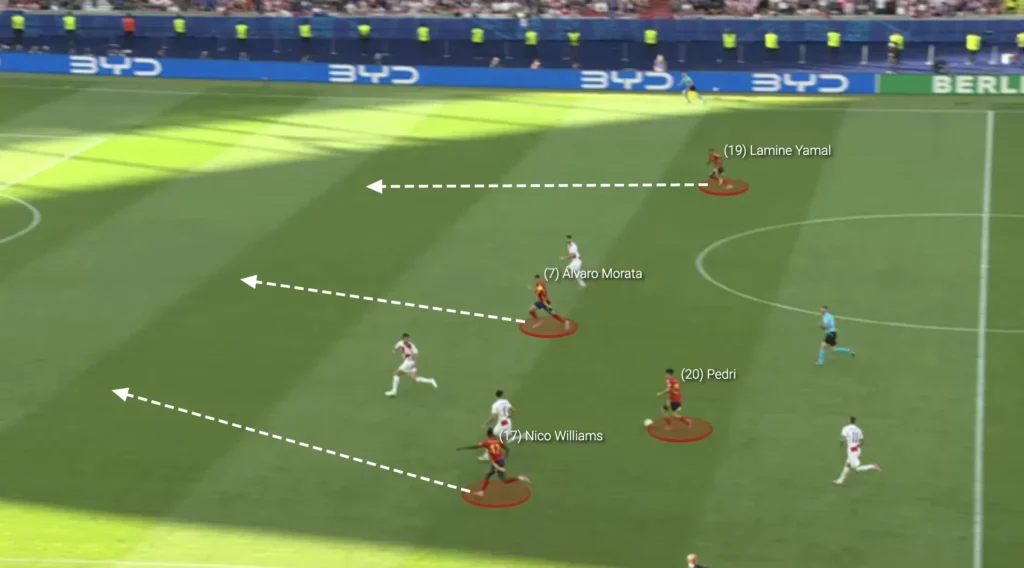
Final Thoughts
In conclusion, Luis de la Fuente’s tactical approach with the Spanish national team showcases a blend of traditional Spanish footballing principles with modern tactical innovations. His emphasis on possession, fluid attacking play, and strategic pressing has reinvigorated Spain’s approach on the international stage. De la Fuente’s adaptability and willingness to incorporate young talents alongside experienced players have created a balanced and dynamic squad.
This tactical analysis shows that De la Fuente’s strategies are designed to maximize Spain’s strengths while addressing previous vulnerabilities. His ability to blend defensive solidity with creative offensive play is setting the stage for Spain’s potential resurgence in international competitions. As Spain continues to evolve under his guidance, fans can look forward to a team that embodies both the rich footballing heritage of Spain and the tactical understanding of their forward-thinking manager.
